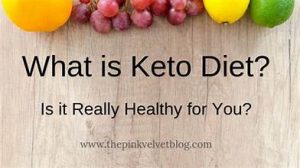Keywords: keto diet, ketogenic diet, low carb diet, high fat diet, beginner’s guide
A low-carb, high-fat diet that has gained popularity recently is called the keto diet. It entails cutting back on carbohydrates significantly and substituting fat for them. When you cut back on carbohydrates, your body enters a metabolic state known as ketosis. Your body becomes exceptionally proficient at burning fat for energy while it is in a state of ketosis.
The ketogenic diet has a lot of health advantages. Among the most well-known advantages are:
Weight loss: Losing weight is a great benefit of the ketogenic diet. Research indicates that even when participants on different diets consume the same number of calories, those following the ketogenic diet lose more weight. Improved blood sugar control: The keto diet can help to improve blood sugar control in people with diabetes. This is because the keto diet helps to reduce insulin resistance, which is a major underlying factor in diabetes.
Recent years have seen a rise in popularity for the low-carb, high-fat keto diet. It entails significantly cutting back on carbs and substituting fat for them. Your body enters a metabolic state known as ketosis when you cut back on carbohydrates. Your body becomes extremely effective at burning fat for energy when it is in ketosis.
The ketogenic diet has several advantages for your health. Among the most well-known advantages are the following:
Weight loss: Losing weight with the ketogenic diet is highly successful. Research has indicated that even while following the same caloric intake, individuals following the ketogenic diet have greater weight loss than those following other diets.
This is a keto diet overview for beginners:
Items to eat:
Meat: fish, poultry, hog, and beef
Eggs: Ideally, whole eggs
Non-starchy vegetables: Broccoli, cauliflower, zucchini, and leafy greens
Good fats: coconut oil, avocado oil, and olive oil
Things to stay away from: • Sugar: candies, soda, juice, and pastries
Grains: Cereal, rice, pasta, and bread
Starchy veggies, such as peas, maize, and potatoes
Fruit: Berries, while generally heavy in carbohydrates, are an excellent choice when consumed in moderation.
How to begin a ketogenic diet: • Lower your daily carbohydrate intake to 20–50 grams.
Raise your daily fat consumption to 70–80% of your caloric intake.
Verify that you are getting adequate magnesium, potassium, and sodium, among other electrolytes.
A successful ketogenic diet should focus on eating lots of non-starchy veggies and drinking lots of water.
Steer clear of sugary drinks and processed foods.
Use healthy fats while cooking, like coconut, avocado, and olive oil.
Add electrolytes, like magnesium, potassium, and sodium, as a supplement.
For the majority of people, the keto diet is both safe and beneficial. Before beginning any new diet, you should consult your doctor, especially if you have any underlying medical concerns.
https://www.digistore24.com/redir/459782/SAIFLODHI/




